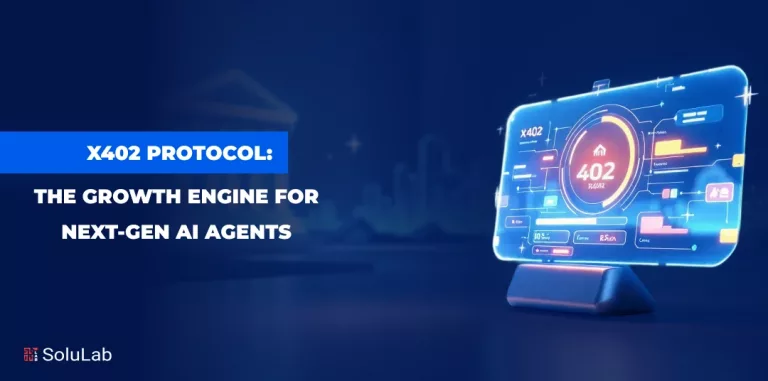
The present banking infrastructure requires efficient cash management to be a strategic business advantage when it handles funds between branches and ATMs as well as vaults. The increasing demand for intelligent cash inventory management software for banks reflects financial institutions’ ongoing pursuit to enhance operations while cutting costs and meeting regulatory standards.
Market Trends
The financial services software market exceeded $100 billion in value during 2023 while showing a projected CAGR of more than 8% until 2030. The increasing back-office and logistics system evolution leads to market growth which is mostly driven by solutions for monitoring and forecasting and controlling cash levels in banks. Banking needs have become a primary focus for inventory management software development among organizations. The development process for this solution starts with basic requirements which requires specific features and technology selections and industry standards.
Critical Role of Cash Inventory Management Software
Operational Significance
Many economies continue to depend on cash as a fundamental financial instrument despite digital payment adoption growth. The physical management of cash by banks requires optimized systems which provide sufficient access to cash while reducing storage expenses. A well-optimized bank cash logistics solution provides improved service quality and reduces both emergency cash delivery needs and improves security measures.
A poorly managed cash inventory system creates three major problems: it produces excessive stockpiling alongside supply shortages and generates unnecessary transportation costs. The growing regulatory focus on cash handling operations requires financial institutions to implement transparent and secure handling systems. Banks require specific cash inventory management software to meet their operational needs.
Core System Functions
Essential Components
The creation of a robust system depends on the following fundamental components:
1. Real-Time Cash Tracking: The ability to monitor cash quantities in real-time through ATMs and branches as well as cash-in-transit vehicles makes up this function. The system eliminates areas of uncertainty to produce better strategic decisions. The system generates predictive analytics capabilities which use past usage patterns and seasonal data to forecast upcoming cash requirements.
2. Cash Forecasting and Optimization: The system generates cash forecasts through predictive algorithms which combine transaction data with holiday patterns and event prediction models. Bank-operated forecasts based on optimized calculations minimize both storage costs of excess cash and inventory outages thus decreasing operational expenses.
3. Route and Delivery Planning: Banks can achieve optimized delivery planning through software integration with armored transport services which automates delivery scheduling and vehicle routing and load planning functions for efficient bank cash logistics. Dynamic scheduling adjustments based on real-time data points improve system response times.
4. Compliance and Audit Readiness: The cash inventory system needs to meet regulatory demands such as the Basel III liquidity and risk requirements. The built-in audit trail along with customizable reporting capabilities help organizations prepare for internal as well as external audit inspections.
5. Security and Role-Based Access: Security is paramount. A secure banking system requires three key security elements: encrypted communications and multi-factor authentication and role-based access control. Access to sensitive cash information must remain restricted to personnel who possess authorized permissions.
Development Process
Step-by-Step Implementation
The development of banking cash inventory solutions follows a planned process which combines domain expertise with agile development approaches. Follow these steps to achieve the development goal.
Step 1: Requirements Gathering
The process begins by bringing together stakeholders who include branch managers along with IT teams and logistics providers to identify their challenges and requirements. The team should identify which features remain unchangeable and what problems need resolution through the new system.
Step 2: Market and Competitor Analysis
The market analysis includes assessments of solutions provided by NCR Corporation, Glory Global Solutions and Diebold Nixdorf. The cash handling solution providers do not provide customization options. The analysis of their capabilities and weaknesses enables the development of a competitive product.
Step 3: Technical Architecture and Design
The architecture design should implement modular scalable microservices and API integration for future development capabilities. Cloud-native design provides organizations with scalability features together with disaster recovery capabilities. During this phase security systems together with data protection mechanisms and regulatory compliance must be designed as foundational elements.
Step 4: Front-End and Back-End Development
The front-end requires data visualization tools as well as an interface that is easy for users to navigate. Robust data processing and machine learning algorithms for forecasting and ATM system or third-party vendor API integrations are required on the back-end.
Front-end development should use frameworks such as React or Angular while back-end development uses Node.js, Python, or Java for logic implementation. Cloud services from AWS, Azure, and Google Cloud should be used to host the system and for scaling purposes.
Step 5: Integration with Banking Systems
The software needs to integrate without any issues with the bank’s core systems as well as ATM monitoring tools and cash logistics providers. These connections can be established through APIs or middleware solutions.
Step 6: Testing and Quality Assurance
Functionality testing should be combined with performance and security testing. Penetration testing together with vulnerability assessments must be performed to qualify the system as a secure banking system. The QA process requires regression testing services alongside unit testing and user acceptance testing to ensure product stability and performance.
Step 7: Deployment and Support
Start by implementing a pilot before transitioning to full-scale deployment of the system. Continuous support together with system updates should be provided to users along with regulatory change updates and user feedback integration.
Technology Stack
Key Tools and Platforms
Financial software development in the present day employs various technologies to provide security alongside scalability and agility. Some of the core components include:
- Artificial Intelligence & Machine Learning: For predictive analytics and anomaly detection.
- Blockchain: For audit trails and tamper-proof transactions.
- Cloud Computing: For scalability and disaster recovery.
- Big Data Platforms: For managing large volumes of transaction and cash flow data.
- APIs and Webhooks: For integrating with third-party logistics and ATM systems.
Security frameworks including OAuth 2.0, SSL encryption and data masking are essential to protect customer and operational data. Non-negotiable compliance standards include GDPR, PCI DSS and SOX.
Development Best Practice
Enterprise-grade systems for banks must meet high expectations during their development process. Below are some best practices:
- User-Centered Design: Prioritize intuitive interfaces that reduce training time for staff.
- Redundancy and Failover: Ensure high availability through load balancing and data replication.
- Modular Development: Use modular architecture to allow easy upgrades and maintenance.
- Role-Based Dashboards: Customize views for different users—e.g., branch manager, regional admin, security officer.
- Real-Time Monitoring: Build dashboards to show KPIs like cash levels, forecast accuracy, and logistics costs.
Real-World Examples
Several banks and financial institutions are already investing in custom cash inventory solutions:
- Barclays: Uses AI-driven forecasting to optimize ATM replenishment schedules.
- Bank of America: Integrated real-time cash tracking into its nationwide branch network to minimize excess holdings.
- ING: Deployed a modular logistics system that reduced cash transport costs by 12% in its first year.
The examples show how intelligent cash inventory management software gives banks a competitive edge.
Challenges and How to Overcome Them
Despite the benefits, developing this kind of system isn’t without its hurdles:
- Legacy Systems Integration: Many banks run outdated software that may not support modern APIs.
Solution: Use middleware to bridge old and new systems. - Data Silos: Separate systems for ATMs, branches, and logistics providers can create fragmented insights.
Solution: Unify data via centralized platforms. - Regulatory Hurdles: Constant changes in compliance rules can complicate development.
Solution: Engage compliance experts during the planning phase.
The Future of Cash Management in Banking
Digital transformation will drive the industry toward intelligent automation instead of static reporting. The future systems will utilize artificial intelligence to generate logistics suggestions and execute instant forecast modifications while identifying abnormal patterns of theft or cash loss. The implementation of real-time alerts and dashboards enables management to respond more effectively and take proactive actions.
The emergence of digital-only banks leads some to question the future necessity of physical cash. In several parts of the world including rural regions and cash-oriented economic systems physical cash continues to be essential. The banking software development field will maintain its essential role in optimizing operations while preserving financial system trust.
Conclusion
Building a sophisticated cash inventory management system demands expertise in software engineering together with banking operations understanding. Banks need more than tool development since the process involves complete transformation of their fundamental asset management system. Banks can generate major value while building operational resilience through the combination of real-time cash tracking systems with logistics optimization and regulatory compliance measures.
Financial institutions need inventory management software development investments because it represents their absolute requirement for cost efficiency security and service quality enhancement. Economic backbone financial systems require their operational systems to keep pace with technological advancements.




